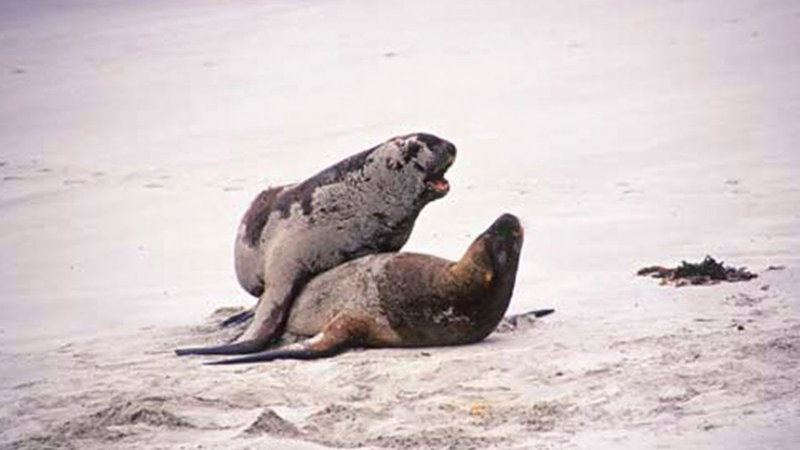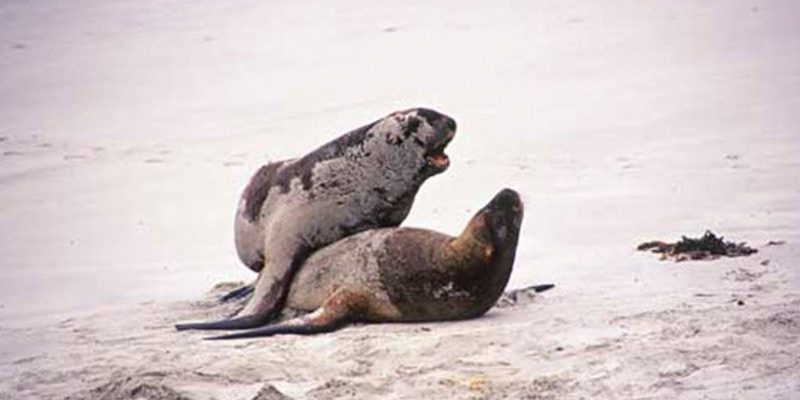
Just like humans and many other animals, sea lions have specific mating habits and nurturing behaviors that ensure their species continues to thrive. Some species, like the California sea lion, are particularly known for their lively colonies and strong social structures. They gather in large groups, haul out on rocks or beaches, and engage in quite the spectacle during mating season. It’s a little like a raucous party where everyone is trying to find their perfect match!
In this article, we’re going to explore the ins and outs of sea lion reproduction, from courtship rituals to the nurturing care of their young. So, grab your favorite drink, and let’s get started!
Understanding Sea Lion Courtship
Courtship in sea lions is a captivating display of behavior that shows off the males’ strength and vitality. During mating season, which often occurs in late spring to early summer, male sea lions gather at breeding sites. Here’s the thing: they’re not just lounging around; they’re establishing territories and competing for the attention of females. Males can often be seen engaging in fierce battles, showcasing their size and strength.
The courtship rituals typically start with vocalizations. Males emit loud barks and growls, trying to attract females and assert their dominance over other males. It’s like a loud concert where only the strongest voices get heard! You might also notice some males performing acrobatic displays—leaping and twisting in the water to impress the ladies.
Once a female is interested, she may approach the male, leading to courtship behaviors that can include nuzzling and rubbing. After a bit of flirting, if all goes well, mating occurs, and the female will become pregnant.
The Gestation Period
After a successful mating, the female sea lion undergoes a pregnancy that lasts about 11 months. During this time, she starts preparing for the arrival of her pup. It’s a bit like nesting, where she’ll create a safe space in her territory, often on sandy beaches or rocky outcrops that are sheltered from harsh waves.
Here’s where the process gets fascinating. Sea lions have a phenomenon called delayed implantation. This means that after fertilization, the blastocyst (the early stage of the embryo) can remain in a dormant state for several months before implantation occurs in the uterus. This adaptation allows the female sea lion to time the birth of her pup to coincide with the best conditions for survival, often leading to pups being born at the beginning of summer when food is abundant.
During gestation, the mother will travel to feeding areas, sometimes diving as deep as 600 feet to catch fish and squid. It’s kind of like balancing a busy work schedule while prepping for a big life change!
Pup Arrival and Nursing
When the time finally comes, female sea lions give birth to a single pup, although twins are rare. The birth usually takes place on land, ensuring the pup is safe from predators. Sea lion pups are incredibly cute—covered in a soft, dark fur that keeps them warm and helps them float.
After birth, the mother immediately begins to vocalize, and the pup recognizes her voice almost instantly. This bond is crucial because sea lion colonies can be quite noisy with all the barking. A mother can easily pick out her pup’s call among the crowd.
Nursing lasts about six months, during which the mother will produce a special milk rich in fats and nutrients for her pup. This helps the little one grow quickly and prepares it for the ocean life ahead. The bond between mother and pup during this time is very tender, with the mother often keeping a close watch on her baby, ensuring it stays safe and healthy.
Growth and Development of Sea Lion Pups
As the pup grows, it starts to explore its surroundings more. Around three weeks old, they begin to venture into the water. This is a huge step! You might picture it like a toddler taking wobbly steps on the shore. At first, they’ll swim cautiously, but soon they become quite agile, learning essential skills like diving and hunting from their mothers.
Interestingly, sea lion pups are very social. They often play together, which helps them develop social skills that are important for life in a colony. You might notice them chasing each other or practicing their swimming skills. This playful behavior is crucial for their development and helps strengthen the bonds within the group.
By the time they reach about six months old, sea lion pups are typically weaned and start eating solid food, including fish. They will stay with their mothers for up to a year, learning valuable hunting techniques before becoming independent.
Challenges to Reproduction
Unfortunately, sea lion reproduction is not without its challenges. One of the major threats is climate change, which affects the availability of their food sources. As ocean temperatures rise, fish populations may dwindle or shift to new areas, making it harder for sea lions to find enough to eat during critical times like pregnancy and nursing.
Additionally, human activity poses a risk. Entanglement in fishing gear and habitat disturbances from coastal development can hurt their populations. Pollution also affects their health and reproductive success. It’s a lot to contend with for these majestic creatures!
Conservation efforts are in place to help protect sea lion populations. Understanding the breeding and reproduction of sea lions is crucial for these efforts, as it helps scientists and conservationists develop strategies to assist these magnificent animals in thriving.
The Role of Male Sea Lions in Breeding
While female sea lions bear the pups, males play a critical role in the breeding process. Besides competing for mates, they are responsible for protecting the territory from other males. They’ll establish themselves in a particular area and gather a harem of females, defending them fiercely against intruders.
Males can mate with multiple females during the breeding season, and their success in doing so significantly impacts the genetic diversity of future generations. This competition can sometimes be brutal, with males engaging in fierce battles over territory and mates. But it’s all part of nature’s way of ensuring the strongest genes are passed on.
Interestingly, while males don’t directly nurture the pups, their presence and protection are vital for the safety of the harem. A strong male discourages other males from encroaching on the territory, providing a stable environment for breeding and nurturing.
The breeding and reproduction of sea lions are not just fascinating; they are crucial for the survival of the species. Understanding how these animals reproduce and care for their young helps us appreciate the balance of marine ecosystems. As we face increasing environmental challenges, knowledge about sea lion reproduction can guide conservation efforts, ensuring that future generations of these playful marine mammals thrive.
By being aware of these processes, we can actively participate in protecting their habitats and advocating for sustainable practices. Sea lions might be a world away from our daily lives, but their health and survival reflect the overall health of our oceans. So next time you hear a sea lion barking or see one splashing in the waves, remember the incredible life journey that brought it here!

